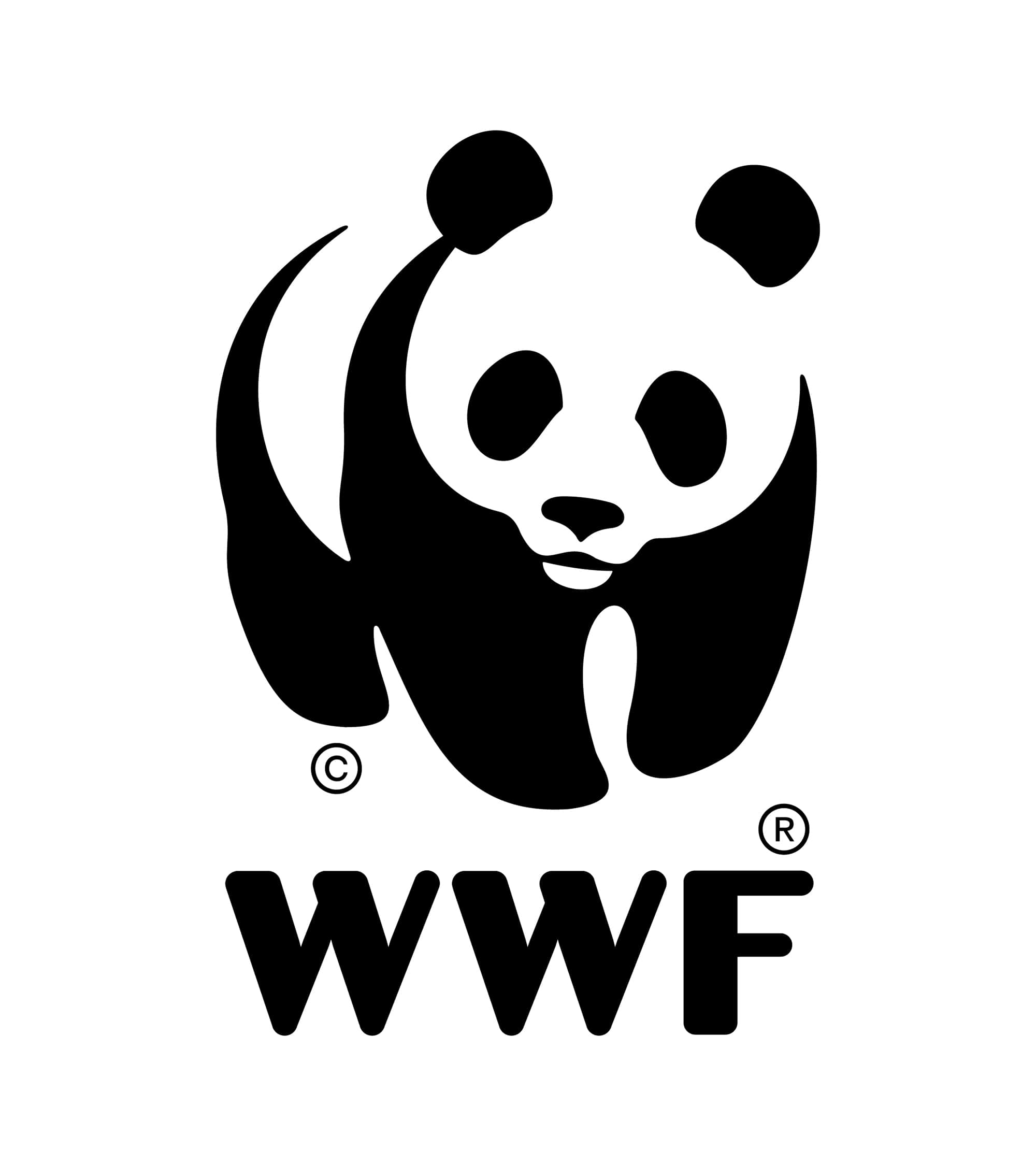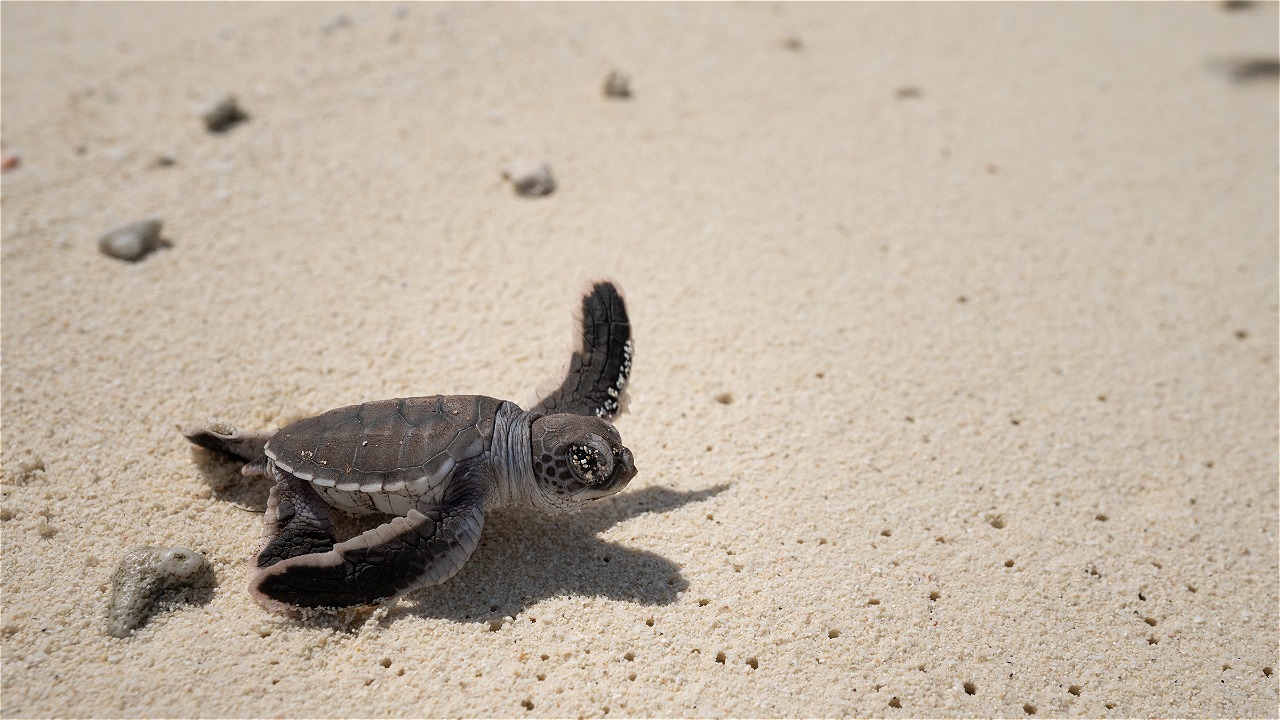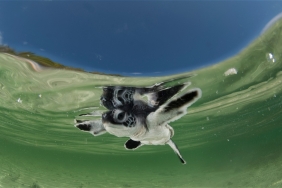BERAU TURTLES, NEST IN THREATS
The seven small islands in Berau Regency, East Kalimantan, are favorite nesting sites for sea turtles. An average of 15,000 female turtles of the green turtle (Chelonia mydas)and hawksbill turtle (Eretmochelys imbricata)nest on these islands. These islands include Derawan Island, Semama Island, Sangalaki Island, Belambangan Island, Sambit Island, Mataha Island, and Bilang-Bilangan Island. The biggest threat to nesting turtles is egg theft and the coastal environment, which is increasingly degraded by unscrupulous people.
There is no official record of the number of sea turtles that nest in Indonesian territory, but the republic's coastline is the longest of any country in the world within the equatorial region, making Indonesia have many coastal areas as suitable nesting sites for sea turtles. Examples include the 60-km coastline of the west coast of Borneo, along the south coast of Java, the west coast of Sumatra, and the north coast of the Bird's Head peninsula of Papua, which is famous as a nesting area for leatherback turtles (the largest in the western Pacific.
For the fisheries sector, Berau's waters, which are almost 20 times the size of Jakarta, hold significant reef and pelagic fisheries potential for East Kalimantan. This vast area and its potential is an invaluable asset of Berau Regency. The average fisheries production from this area is 14,000 tons per year. In 2010, 14,992 tons of fresh fish were produced and then increased, albeit insignificantly, to 15,509 tons the following year. Berau alone accounts for 10% of the total marine fisheries production of the 14 districts in East Kalimantan (after the division of East Kalimantan into North Kalimantan, there are currently 9 cities and districts in East Kalimantan).
However, some of the fisheries activities in this region have actually caused very bad ecological impacts. The latest case occurred a few days ago, on July 22, 2013, when joint forces arrested two boats from Jakarta that were spreading trawls within the conservation area. Allegedly intending to commit fish theft, the use of trawlers is also certain to damage the environment. In addition to damaging marine life, trawling also kills sea turtles that are caught in it. In fact, turtles are one of the tourism icons in the region in addition to Lake Kakaban, one of the two lakes in the world that is home to stingless jellyfish.
Efforts to eradicate illegal and destructive fishing activities, as well as law enforcement for sea turtle egg thieves in this country are still important notes in efforts to protect ecosystems and the environment. Law No. 5 of 1990 on the Conservation of Living Natural Resources and Ecosystems, which has been reduced to various more binding regulations, as well as Berau Regent Regulation No. 31 of 2005 itself has established a "Marine Conservation Area" of 1.27 million hectares in Berau's waters, but violations are still often found.
As quoted from Radar Tarakan, on Tuesday (16/7), the local community reported sea turtle theft activities occurring in Karang Muaras, Maratua Island. The Berau Regency Marine and Fisheries Service (DKP) team led by the Head of the Marine and Fisheries Resources Monitoring and Control Section of DKP Berau, Budy Hariyanto, and his staff immediately moved to the scene, but the pursuit was unsuccessful because the speedboat was too fast. Furthermore, Budy also emphasized that the minimal budget only planned 7 patrols a year. The theft of sea turtle eggs still occurs frequently without any firm action, while fisheries activities that use environmentally unfriendly tools such as bombs and trawls also often make sea turtles as "victims" (bycatch)still have not been handled effectively.
The above conditions are certainly not in line with the enthusiasm of visitors to this area which continues to increase sharply. In 2010, there were 10,824 foreign tourists visiting the area. In 2012, it increased by 60% to around 16,828 tourists. Currently, 3-4 new hotels are being developed, as well as several cottages and improvements to residents' homes that are prepared to accommodate the level of domestic travelers whose numbers are estimated to be much larger. This tourism potential can certainly boost the local economy through creative tourism industry services. However, if these violations still seem to be allowed, the potential of the creative economy will be threatened in the future.
Continuous socialization for tourists and communities to stop consuming sea turtle eggs, as well as the long-term benefits for management from the tourism sector are expected to be the spearheads that can significantly overcome this problem. The public is made aware that consumption of turtle eggs is a violation of the law. The Regent of Berau through instruction No.60/2346-Um/XII/2001 has also revoked turtle egg concessions on Sangalaki Island and Derawan Island. Both islands have been designated as no-take areas (full protected). It is hoped that these two approaches will be able to break the turtle egg consumption trade in Berau.
Strict regulation of the zoning of fisheries fisheries activities is absolutely necessary, in addition to the regulation of the use of fishing gear must also be strictly enforced. Coordination between the local government and the central government must also be improved. This coordination is related to the granting of permits for distant catch areas and permits based on the distance from the coastline.
Coordination between government agencies, community organizations, and law enforcement officials in enforcing strict regulations is absolutely non-negotiable, unless we all agree that this "tourism pearl" of East Kalimantan is not important for the local economy and future generations. (ar)
----------------
WWF-Indonesia started conservation efforts in Berau in 2000 with support from WWF-NL and DANIDA (Danish International Development Agency). Efforts to protect sea turtles have also been made by the Berau Regency Government, which has long banned the sale of sea turtle eggs in accordance with Berau Regent Decree No. 660/2346-UM/XII/2001, which contains a ban on exploiting and utilizing sea turtle eggs.
Reference:
- http://www.festivalderawan.com/?p=3993
- http://simpotda.web.id/index.php?option=com_content&view=article&id=654:perikanan-berau&catid=597:potensi-perikanan&Itemid=94
- http://perikananberau.files.wordpress.com/2010/05/buku_menuju-kkl-berau.pdf
- http://www.radartarakan.co.id/index.php/kategori/detail/Berau/41319





